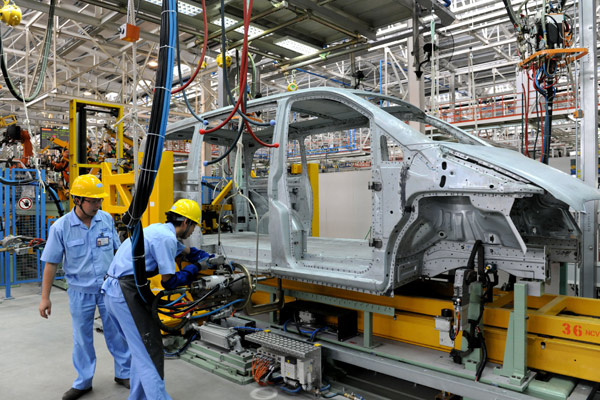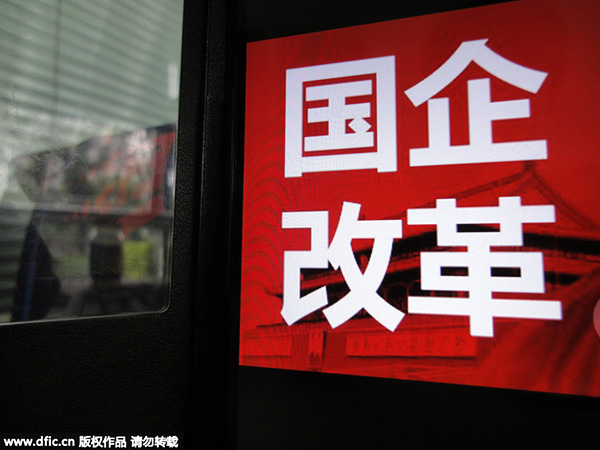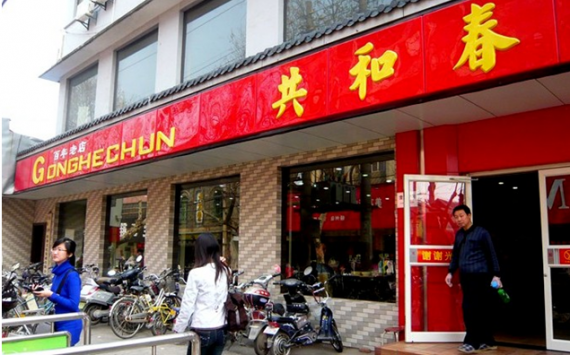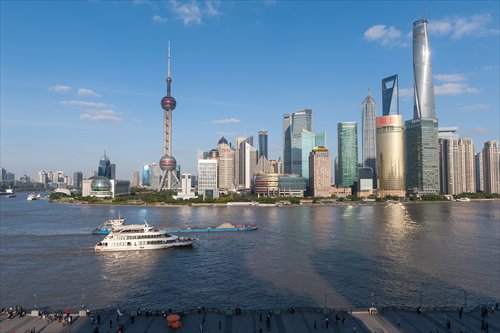 –
–

–

–
Much has been said — but far less is understood — about the One Belt One Road initiative, the centerpiece of Xi Jinping’s expansive foreign policy. That Mr. Xi has ambitions to extend across Eurasia China’s commercial, political and military power is not in doubt. But, the precise details on OBOR remain just about as unclear now as they did four years ago when the policy was unveiled — which countries are included, how much cash China will invest or lend, where are the first-order priority projects, will any of the trillions of dollars of proposed spending achieve commercial rates of return? Questions multiply. Answers are few.
There is one remote corner of the planet, however, where the full weight of OBOR’s grand strategy and profit-making potential are coming into view. It’s in a small village called Hambantota along the southern fringe of Indian Ocean beachfront in Sri Lanka.
One of China’s largest and most powerful state-owned companies, China Merchants Group, with total assets of $855 billion, is in the final stages of completing the purchase for $1.1 billion of a 99-year lease for a majority stake in a seven-year-old loss-making deep-water container port. It was built for over $1 billion on a turnkey basis by Chinese state-owned contractors. It is owned and operated by the Sri Lankan government’s Port Authority.
I’m just back in China from a rare guided visit inside Hambantota port. Like other bankers and investors, we’ve felt the pinch as much of Chinese outbound investment has been cancelled or throttled back this year. Hambantota, though, is full steam ahead.
Hambantota’s future appears now about as bright as its present is dreary. On the day I visited, there was virtually no activity in the port, save the rhythmic wobbling of a Chinese cargo ship stuck in Hambantota for three weeks. Due to choppy seas and also perhaps inexperienced Sri Lankan port staff, the Chinese ship has been sitting at anchor, unable to unload the huge Chinese-made heavy-duty cranes meant to operate on the quayside.
Though the Chinese ambassador to Sri Lanka has pledged that Hambantota will one day resemble Shanghai, as of today, elephants in the nearby jungle are about as numerous as dockworkers or pedestrians. Tragically, the region was ravaged, and partly depopulated, by the Tsunami of 2004. China Merchants will take over management of the port within the next month or so. There is much to do — as well as undo. The Hambantota port, under Sri Lankan government management, has been a bust, a half-finished commercial Xanadu where few ships now call. The port has lost over $300 million since it opened.
China Merchants’ plan to turn things around will rest on two prongs. Its port operations subsidiary, Hong Kong-listed China Merchants Port Holdings, will take over management of Hambantota. It is the largest port owner and operator in China. Almost 30% of all containers shipped into and out of China are handled in China Merchants’ ports. The ports business earned a profit of $850 million last year. China Merchants has what the Sri Lankan government’s Hambantota port operator could never muster: the operational skill, clout, capital and commercial relationships with shippers inside China and out to attract significant traffic to Hambantota. China’s state-owned shipping lines deliver more containers than those from any other country.
In addition, China Merchants will enlist other large China SOEs to invest and set up shop in an 11 square-kilometer special economic zone abutting the Hambantota port. The SEZ was created at the request of the Chinese government, with the promise of $5 billion of Chinese investment and 100,000 new jobs to follow. China Merchants is now drawing up the master plan.
A who’s who of Chinese SOE national champions are planning to move in, beginning with a huge oil bunkering and refining facility to be operated by Sinopec as well as a large cement factory, and later, Chinese manufacturing and logistics companies. This “Team China†approach – having a group of Chinese SOEs invest and operate alongside one another — is a component of other OBOR projects. But, the scale of what’s planned in Hambantota is shaping up to be far larger. The flag of Chinese state capitalism is being firmly planted on this Sri Lankan beachfront.
Hambantota is only ten to twelve nautical miles from the main Indian Ocean sea lane linking the Suez Canal and the Malacca Straits. Most of China’s exports and imports sail right past. An average of ten large container ships and oil tankers pass by every hour of every day. From the Hambantota port office building, one can see the parade of huge ships dotted across the horizon. Along with transshipping to India and the subcontinent, Hambantota will provide maintenance, oil storage and refueling for shipping companies.
Sri Lanka is the smallest of the four Subcontinental countries, with a population of 20 million compared to a total of 1.7 billion in India, Pakistan and Bangladesh. It has one geographic attribute its neighbors lack — a deep-water coastline close to Indian Ocean shipping lanes and conducive to building large deep-water ports able to handle the world’s largest container ships and supertankers. This should make Sri Lanka the ideal transshipment point for goods and natural resources going into and out of the Subcontinent.
The Port of Singapore is now the region’s main transshipment center. It is three to four times as distant from India’s major ports as Hambantota. Singapore is now the world’s second-busiest port in terms of total shipping tonnage. It transships about a fifth of the world’s shipping containers, as well as half of the world’s annual supply of crude oil.
Even before President Xi first articulated the OBOR policy, Sri Lanka was already seen as a key strategic and commercial beachhead for China’s future trade growth in the 40 countries bordering the Indian Ocean. China and Sri Lanka have had close and friendly diplomatic ties since the early 1950s. Both style themselves democratic socialist republics.
Sri Lanka is the one country in the region that enjoys cordial relations not only with China but also the US, and the three other Subcontinental nations. Sri Lanka’s GPD is $80 billion, less than one-tenth the total assets of China Merchants Group. Sri Lankan per capita GDP and literacy rate are both about double its Subcontinental neighbors. While a hardly a business nirvana, it is often easier to get things done there than elsewhere in region.
The first port was established in Hambantota around 250 AD. It was for centuries, until Chinese emperors sought to prohibit Chinese junks from sailing the open seas, a stopping point for Chinese ships trading with Arabia.
China Merchants has been trying for four years to close the deal there. China Merchants Port Holdings is a powerful presence in Sri Lanka. It already built and operates under a 35-year BOT contract a smaller, highly successful container port in the capital Colombo. It opened in 2013. It’s one of the few large-scale foreign direct investment success stories in Sri Lanka. The future plan is for the China Merchants’ Colombo port to mainly handle cargo for Sri Lanka’s domestic market, while Hambantota will become the main Chinese-operated transshipment hub in the Indian Ocean.
Chinese SOEs are also in the throes of building a port along the Pakistani coast at Gwadar and upgrading the main ports in Kenya. The direction of Beijing’s long-term planning grows clearer with each move. If not exactly a Chinese inner lake, the Indian Ocean will become an area where Chinese shipping and commercial interests will more predominate.
During the Hambantota negotiations, the Sri Lankan government blew hot and cold. The country needs foreign investment and Chinese are lining up to provide it, as well as additional infrastructure grants and loans. Chinese building crews swarm across a dozen high-rise building sites in Colombo. Chinese tourist arrivals are set to overtake India’s. The main section of the unfinished highway linking Colombo and Hambantota was just completed by the Chinese.
The new coalition government that came to power in Sri Lanka in early 2015 has sometimes showed qualms about the scale and pace of Chinese investment. India has already signaled unease with the Chinese plans to take over and enlarge the port in Hambantota. Prior to signing the contract with China Merchants, the Sri Lanka government provided India with assurances the Chinese will be forbidden to use the port for military purposes.
China Merchants will effectively pay off the construction loans granted by the state-owned Export-Import Bank of China to the Sri Lankan government in return for the 99-year operating lease. China Merchants plans to invest at least another $1 billion, but perhaps as much as $3 billion, to complete Hambantota port and turn it into the key Indian Ocean deep-water port for ships plying the route between Suez and East Asia. Rarely if ever in my experience do OBOR projects have the crisp commercial logic of Hambantota. Assuming ships do start to call there, Hambantota should prove quite profitable, as well as a major source of employment and tax revenue for Sri Lanka.
As of now, there is almost no housing and no infrastructure in Hambantota, only the port facility, a largely-empty international airport and a newly-opened Shangri-La hotel and golf course. The airport and port were pet projects of a local Hambantota boy made good, Mahinda Rajapaksa. He was Sri Lanka’s president from 2005 to 2015, when he was voted out of office. In December last year, the port was taken over by a mob of workers loyal to the Rajapaksa. They took several ships hostage before the Sri Lankan navy sailed in to end the chaos.
The port will be able to handle dry cargo, Ro-ro ships transporting trucks and autos, oil tankers as well as the world’s largest 400-meter container ships. Hambantota should lower prices and improve supply chains across the entire region, and so drive enormous growth in trade volumes — assuming power politics don’t intrude.
China and India have prickly relations, most recently feuding over Chinese road-building in the disputed region of Doklam. India has balked at direct participation in OBOR, and complains loudly about its mammoth trade deficit with China, now running about $5 billion a month. Chinese exports to India have quadrupled over the past decade, in spite of India’s extensive tariffs and protectionist measures. Hambantota should allow India’s manufacturing sector to be more closely intertwined with Chinese component manufacturers and supply chains. That is consistent with India’s goal to increase the share of gdp coming from manufacturing, and manufactured exports, both still far smaller than China’s. But, India will almost certainly push back, hard, if Hambantota leads to a big jump in its trade deficit with China.
China’s exports may be able to come in via the Sri Lankan backdoor. India and Sri Lanka have a free trade agreement that in theory lets Sri Lankan goods enter the vast market duty-free. Chinese manufacturers could turn the Hambantota free trade zone into a giant Maquiladora and export finished products to India. This would flood India with lower-priced consumer goods, autos, chemicals, clothing. Bangladesh, Pakistan and Burma — smaller economies but friendlier with China — would likewise absorb large increases in exported Chinese goods, either transshipped from Hambantota or assembled there.
No area within OBOR is of greater long-term significance to Chinese commerce. Fifty years from now, if UN estimates prove correct, the population of India, Pakistan and Bangladesh will be about 2.3 billion, or about double where China’s population will be by then.
Some China Merchants executives are dreaming aloud the Thai and Chinese governments will close a deal to build a canal across Southern Thailand. This would shave 1,200 miles off the sea route from Suez to China. The preferred canal route across the isthmus of Southern Thailand is actually shorter than the length of the Panama Canal. The canal would re-route business away from Singapore and the Malacca Straits. The likely cost, at around $25 billion, could be borne by China without difficulty. Hambantota would grow still larger in importance, commercially and strategically.
For now, though, the Thai canal is not under active bilateral discussion. Not only does the ruling Thai junta worry about its landmass being cleaved in two, the governments of the US, Japan, Singapore would likely have serious reservations about altering Asian geography to enhance China’s sea power and naval maneuverability.
By itself, a Chinese-owned and operated Hambantota will almost certainly reconfigure large trade flows across much of Asia, Africa and Europe, benefitting China primarily, but others in the region as well. It is a disruptive occurrence. While much of China’s OBOR policy remains nebulous and progress uncertain, Chinese control of Hambantota seems more than likely to become a world-altering fact.
–
As published in The Financial Times
–
































